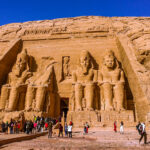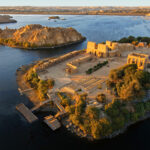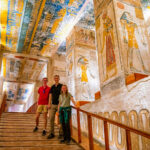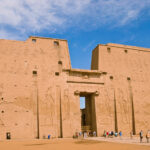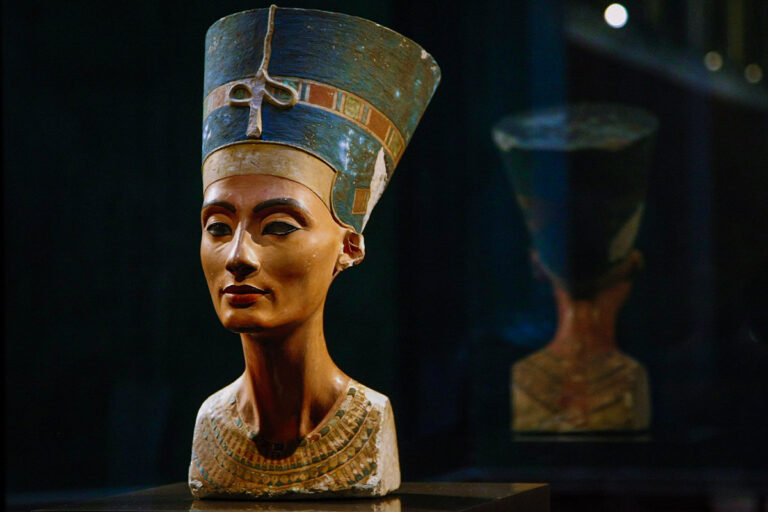This 12-day trip to Egypt will take you to Cairo, Aswan, Luxor, and Hurghada, where you can see the most beautiful landscapes of Egypt. Learn what it’s like to explore the world correctly with this 12-day Egypt itinerary, which includes stops in Cairo, Luxor, Aswan, Alexandria, Hurghada, and other Egyptian tourist destinations. During your 12-day trip to Egypt, you can see the Aswan Dam, Abu Simbel, Kom Ombo, and Edfu temples, the Valley of the Kings, the temple complexes of Karnak, and Carnaptia.
Plan a beautiful cruise down the Nile River in Egypt. See Cairo, Luxor, and Aswan’s monuments, museums, and other attractions in 12 days. Hurghada is also a great place to relax in the crystal-clear waters of the Red Sea.
We have compiled a list of places to see and things to do in Egypt so that you can make the most out of your 12 days trip and bring back the best memories. We recommend a 12-day trip to Egypt to see all its amazing sights.
Egypt in 12 Days :
Day 1: Arrival In Egypt (Welcome to Egypt)

On the first day of your 12-day Egypt plan, you will begin your journey when you arrive at Cairo International Airport.
At Cairo International Airport, our Meet and Assist staff will wait to assist you with your bags, passport control, and customs. Then, our air-conditioned van will take you to your hotel in Cairo.
When and if you get there, The Tour Director will help you check in at your hotel and go over your plan for your trip to Egypt for the next 12 days, including the times and places you will be taken on each tour.
Day 2: Giza Necropolis and Memphis City & Saqqara Necropolis

On the second day of a 12-day trip to Egypt, you can visit the Giza necropolis, the Memphis cemetery, and the Saqqara necropolis.
1- Giza Necropolis: Climbing the Pyramid of Giza The Great Pyramid is located in an ancient Egyptian city, Maqbara, about 20 km from Cairo.
Buildings of the necropolis:
Part of the Egyptian pyramid complex is several smaller subsidiary pyramids, mortuary temples, valley temples with processional piers and paths, and the Great Pyramid of Khufu or Khufu, also known as the Great Pyramid. The Great Sphinx of Giza is another famous landmark carved into the plateau’s rock.
Although the Pyramid of Khafre or Khafre appears to be the tallest, this is only because it was built on a slightly higher part of the Giza Plateau. Khufu or Khufu built the tallest and largest Pyramid. In the past, people believed the Great Pyramid to be one of the Seven Wonders of the World; now, it is the only one of the original seven still standing.
2- Memphis City & Saqqara Necropolis
Saqqara Necropolis

Saqqara Necropolis is where you can find the oldest Egyptian tombs. During the First Dynasty, a tomb was built there.
Inside the Saqqara Necropolis, you can find the tombs of kings and high-ranking officials from the First and Second Dynasties. You can also find the Step Pyramid of Zoar, the oldest large stone building in history.
Saqqara is the ancient Egyptian capital of Memphis, a vast, sprawling place where people were buried in the past. The Step Pyramid of Djoser also called the Step Tomb because of its square base, is just one of the many pyramids at Saqqara.
Memphis City: Memphis, the first region of Lower Egypt, was the capital of ancient Egypt. Memphis is now home to a world-famous cemetery. You can find the ruins of this Place near the village of Mit Rahina, and they are home to a giant statue made by people. The colossal sculpture of Ramesses II and the Sphinx made of alabaster were among the royal possessions that belonged to Queen Hatshepsut.
Day 3: Cairo sightseeing

On the third day of your 12-day trip to Egypt, you will visit the Egyptian Museum.
1- The Egyptian Museum (Cairo Museum )
The Egyptian Museum is the largest museum in the world that revolves around just one culture. You will be amazed at the number of priceless items and relics on display, and you will be able to see the golden mask of the young king Tutankhamun.
In the Egyptian Museum, you can find things from the time of the pharaohs. The museum has art from Egypt dating back more than 5,000 years. People often say it is the best and most comprehensive collection of ancient Egyptian art ever. Tutankhamun’s fortune is just one of the many things on display, and it is one of more than 250,000 natural objects on display.
2- Saladin’s Citadel (Cairo Citadel )

You can’t miss Saladin’s Citadel in Cairo, a significant historic landmark and the site of a military battle in the Middle Ages. The Citadel is one of the most visited places for tourists in Cairo. It is the most famous non-Pharaonic building in the city and looks like a typical early medieval stronghold with its massive gates, towers, and high defensive walls. Saladin built it in 1176 as a defense against Crusader forces, and the rulers of Egypt have lived there for the past 700 years.
3- The Mosque of Muhammad Ali
Most tourists go to the Cairo Citadel to see the Muhammad Ali Mosque. Muhammad Ali Pasha commissioned this beautiful mosque between 1830 and 1848 to rival Hagia Sophia in Istanbul. This mosque is called the Alabaster Mosque because the basement and the courtyard are lined with alabaster tiles up to 11.3 meters high (the rest is limestone).
Remember that the square of the mosque has a clock very similar to the one in the Place de la Concorde in Paris. Don’t miss the enormous chandelier hanging from the domed ceiling of the Muhammad Ali Mosque.
4- Khan el Khalili Bazaar
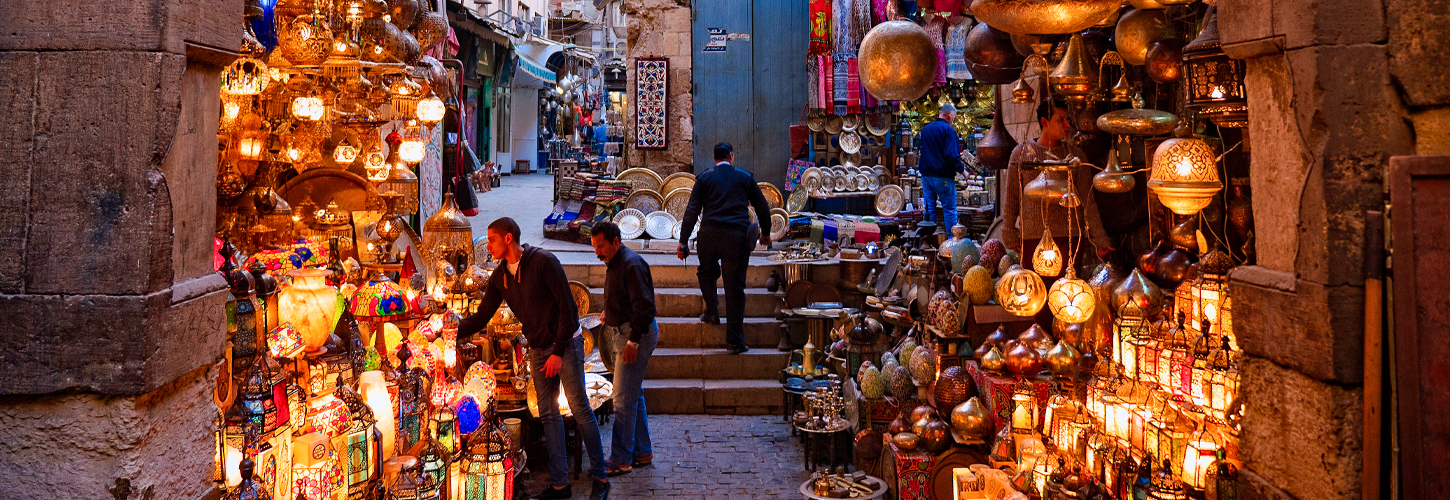
Khan El Khalili Bazaar is one of the most beautiful places in Cairo. In addition to its long and exciting history, it is famous for its high-quality handicrafts that can be purchased from local artists.
Khan El Khalili Market is one of the must-visit places in Cairo. You can buy various goods and shiny little things in this lively, noisy, crowded, and fun market.
Don’t let the fact that there are copies of ancient Egyptian artifacts deter you from researching the modern Egyptian era. Instead, it would be best to try to buy more exciting and unique things. For example, there is a store nearby where you can purchase any herbs you can think of.
The perfume market has many different mixtures of essences and essential oils. In the center, there are a lot of other stalls selling everything from cash to clothes.
Also, you can buy almost everything you need (or want) from street vendors.
Day 4: Day tour from Cairo to Luxor by flight
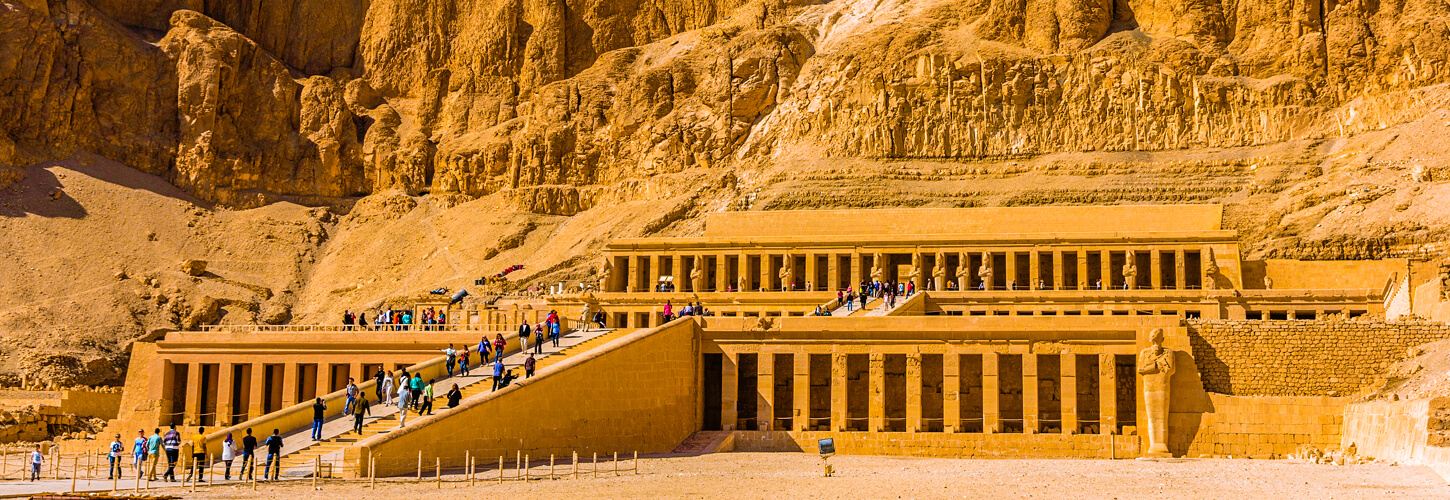
On the fifth day of a 12-day trip to Egypt, you must visit Luxor to see its remarkable sights. From Cairo International Airport, you can go directly to Luxor.
West Bank of Luxor
1- Temple of Hatshepsut
The mortuary temple of Hatshepsut, also known as Deir el-Bahri, is hidden in the shadows of towering cliffs near the west bank of the Nile. This temple was built in his name in honor of the sun god Amun-Ra. The temple is unique because Senmut planned it and made it in the classical style.
The large colonnaded terrace contains towers, courts, and a hypostyle hall. Its height in some places is 97 feet. You can find Sun Square, the Chapel, and the Sanctuary. The myth of Hatshepsut’s birth in heaven and her trade voyages to the land of Punt appear in the art on the interior walls of temples (referring to modern-day Somalia or Arabia).
2- The Valley of the Kings

The Valley of the Kings, also known as the Valley of the Kings, is long and narrow in Upper Egypt, west of the Nile River. This Place is also called the Valley of the Kings. Most rulers of the 18th, 19th, and 20th dynasties (1539-1075 BC), such as Thutmose I and Ramesses X, are buried in this part of Thebes.
There are 62 tombs known to exist on the hills below Deir el-Bahri, each built differently. In 1979, UNESCO made this valley, along with Luxor, the Valley of the Queens, and Karnak, a World Heritage Site.
Day 5: Discover the East Bank of Luxor
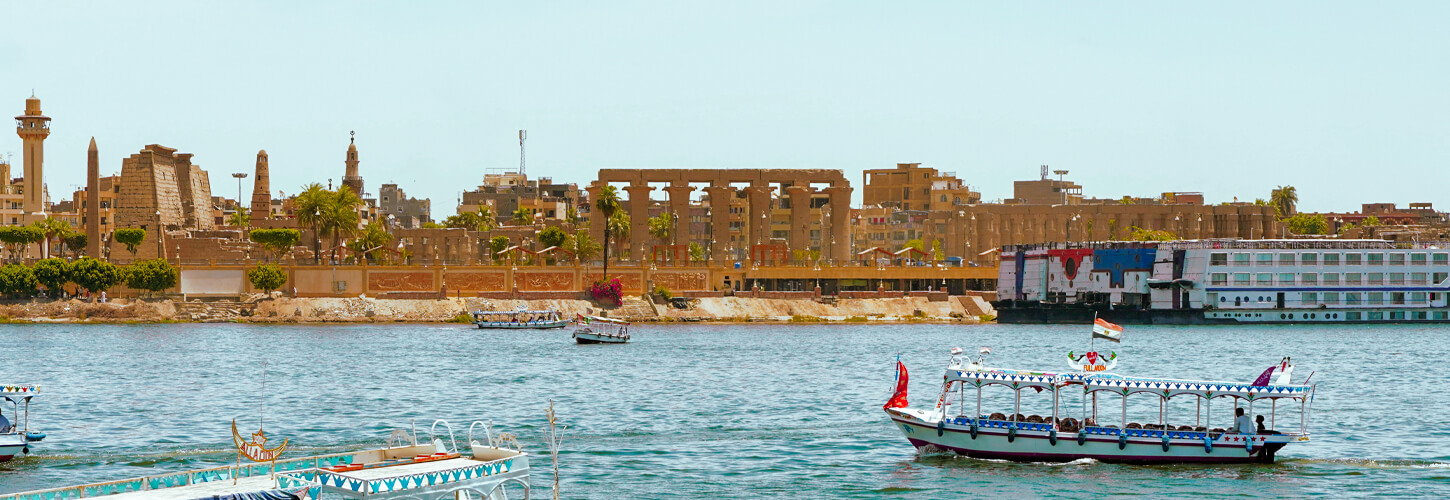
We will visit the East Bank of Luxor on our fifth day in Egypt.
1- Temple of Karnak
The eastern bank of the Nile, where the ruins of the Great Temple of Amun can be seen, is called “Thebes of Karnak,” after the city of Karnak in Upper Egypt. In 1979, Karnak and the rest of ancient Thebes, including the Valley of the Kings and the Valley of the Queens, were added to the UNESCO World Heritage List.
The Luxor Karnak Temple was built around 2000 BC and is mainly dedicated to the god Amun. Only the Great Pyramids at Giza are better known, but this structure is almost as impressive.
2- Luxor Temple

It was called the Luxor Temple in ancient Thebes (modern Luxor). About 3 km south of the Karnak Temple, which was linked by a path to the Sphinx. The first records of this temple date back to the Eighteenth Dynasty (1550-1295 BC).
At the Luxor Temple, cult images of Amun, Mut, and their son, the moon god Khonsu, were brought in procession from their temples at Karnak to honor the god Amenemopet, who lived in the temple. I’ve been to the Opet Festival, so I saw this.
Day 6: Colossi of Memnon, Luxor Museum and Air Balloon Tour

On the sixth day of a 12-day trip to Egypt, you should visit the Colossi of Memnon, Luxor Museum, and fly over the city in a hot air balloon.
1- Colossi of Memnon
Amenhotep III was the king of Egypt during the Eighteenth Dynasty, from 1386 to 1353 BC. There are two giant statues of him in Colossi of Memnon. These ruins are located west of the modern city of Luxor and face east toward the Nile. These statues are present around the throne where the king sits. Carvings of the king’s mother and wife and the god Hapi and other symbols appear. Each statue is 60 feet (18 m) tall and weighs 720 tons. It is made from a single piece of sandstone.
2- Luxor Museum

Here, you can view artifacts from the end of the Old Kingdom to the Mamluk period. Most artifacts came from temples and tombs in Thebes, and the museum does a great job of showing and explaining them.
3- Air Balloon
The best way to see the largest open-air museum in the world is from the basket of a hot air balloon flying over Egypt.
Days 7: (Aswan) Discover the temples of Edfu and Kom ombo

On the seventh day of your 12-day Egypt tour, you will visit Aswan and the temples of Edfu and Kom Ombo.
Temple of Edfu ( Horus )
The Temple of Edfu, built for the god Horus, is one of the best-preserved temples in Egypt. It can be seen in Edfu on the west bank of the Nile. After Alexander the Great took over Egypt in 323 BC, the Temple of Edfu was built by the Ptolemaic dynasty between 237 and 57 BC. The Ptolemies, who came after him and were Greek, retained Egyptian customs and copied Egyptian architecture. Ptolemy III began building temples, and his son Ptolemy IV Philopator continued to do so. After many dynasties, the temple of Edfu was not completed until the time of Ptolemy XII (57 BC).
Temple of Kom Ombo

On the banks of the Nile, near the city of Aswan in Egypt, you can find the Kom Ombo temple. It is unique because it honors not just one group of three gods but two groups of three. In one part, a crocodile-headed deity named Sebek, his wife Hathor with a crocodile head, and their son Khonsu with a crocodile head are honored. The second part concerns Horus, the falcon-headed god of the sky, and the other deities in his divine family.
Although a large part of the temple was damaged by Nile floods and earthquakes and then turned into a quarry, the excellent bas-reliefs of various colors still exist today.
Day 8: Aswan- Abu Simble
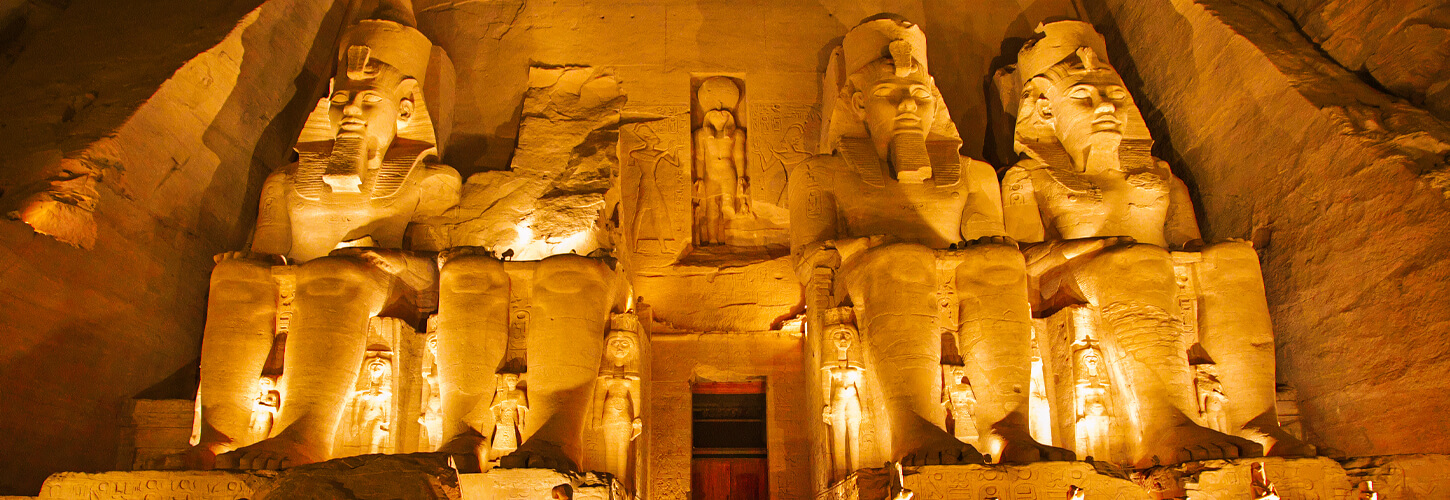
On the eighth day of your 12-day trip to Egypt, you will spend the day at the Abu Simbel temple complex in Aswan.
Abu Simbel Temple Complex
The Abu Simbel temples are among the most important temples in Egypt. They are in Nubia, on the shores of Lake Nasser in Upper Egypt. You can find the temples 280 km south of Aswan. At dawn each year, the sun rises across the Great Temple of Ramses II and lights up the statue of Ramses II in the precincts of the main temple. This is a big attraction for tourists in Egypt and worldwide. Abu Simbel, the jewel in the crown of Egyptian architecture. It is located on the west bank of the Nile River, and it is a massive rock in which two huge temples were carved to honor Ramesses II and his wife, Nefertari.
At the turn of the nineteenth century, when Edward William Lane’s book Description of Egypt was published, European people became interested in the Temple of Ramesses II. The Abu Simbel temple complex is now included in the UNESCO World Heritage List, and this is because it is one of the most fascinating ancient Egyptian temples.
Day 9: Free day in Hurghada

On the ninth day of your twelve-day trip to Egypt, go to Hurghada and see what it offers.
Every neighborhood in Hurghada has something different to offer tourists. Since anyone can access the Red Sea, plenty of resorts and pleasant parks along the shore exist.
On this optional excursion, you can dive or snorkel in the Red Sea and see some amazing marine life. You can also do many other things like surfing, sailing, and deep-sea fishing.
Day 10: Free day in Cairo
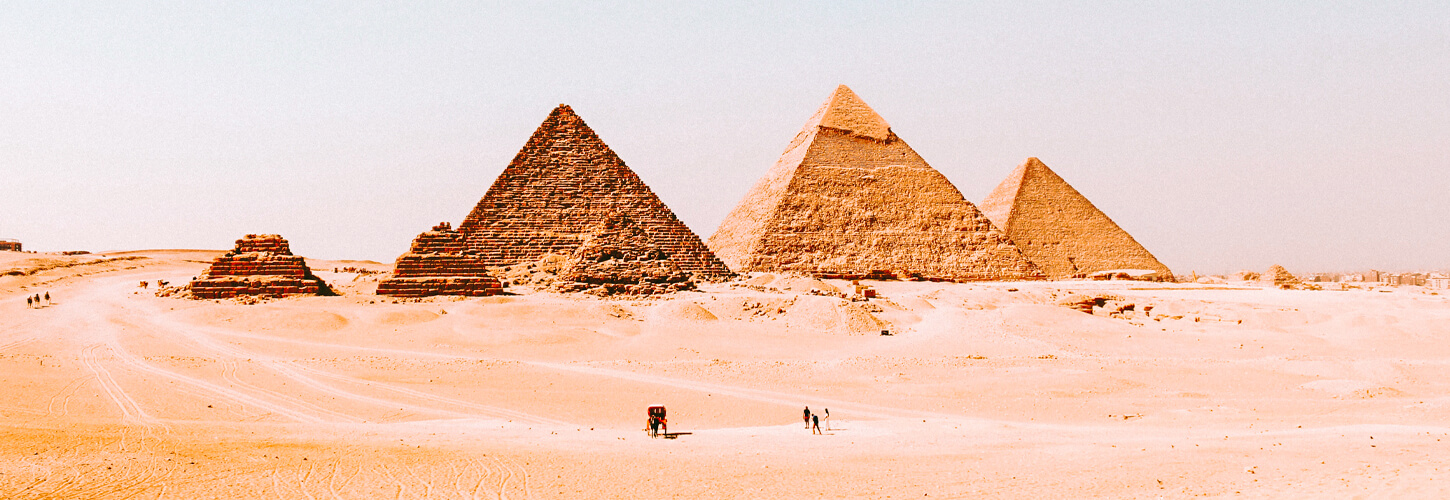
On the tenth day of your 12-day trip to Egypt, you will go to Cairo.
After leaving Hurghada, you will make your way to Cairo. Although you may feel tired, today is a good day to see some of Cairo’s most famous spots and eat some real Egyptian food.
Day 11: Alexandria Tour

On your eleventh day in Egypt, you must go to Alexandria.
Alexandria is an excellent place for a summer vacation. All the things that make for a memorable holiday are right there: sunny skies, mild temperatures, and plenty of things to do. Plan to visit Qaitbay Castle, the Catacombs of Alexandria, the Royal Jewels Museum, the Library of Alexandria, the famous Pompey Column, and the Roman Amphitheatre.
Day 12: Final departure
Today is the last day in Egypt after 12 days. We hope you had a great time there and found the program beneficial as you learned about Egypt over the past 12 days. Most of the world’s wonders can be found in Egypt, so you’ll want to return.
Get up to 10%Off when booking one of our Egypt Vacation Packages. Check them out now!

